Expert Guide to Buying a Tent

Looking for the perfect tent for your upcoming camping trip? Whether you’re off on a festival weekend, planning a backpacking adventure or have an upcoming stay at one of our Club Sites, we’re here to help. Our expert tent guide covers the different types of tents available, what to look for, and where to buy.
Skip to:
- What to consider before buying a tent
- Tent features
- Tent materials
- Types of tents
- Quick pitch tent styles
- Where to buy a tent
- FAQs on buying a tent
What should I consider before buying a tent?
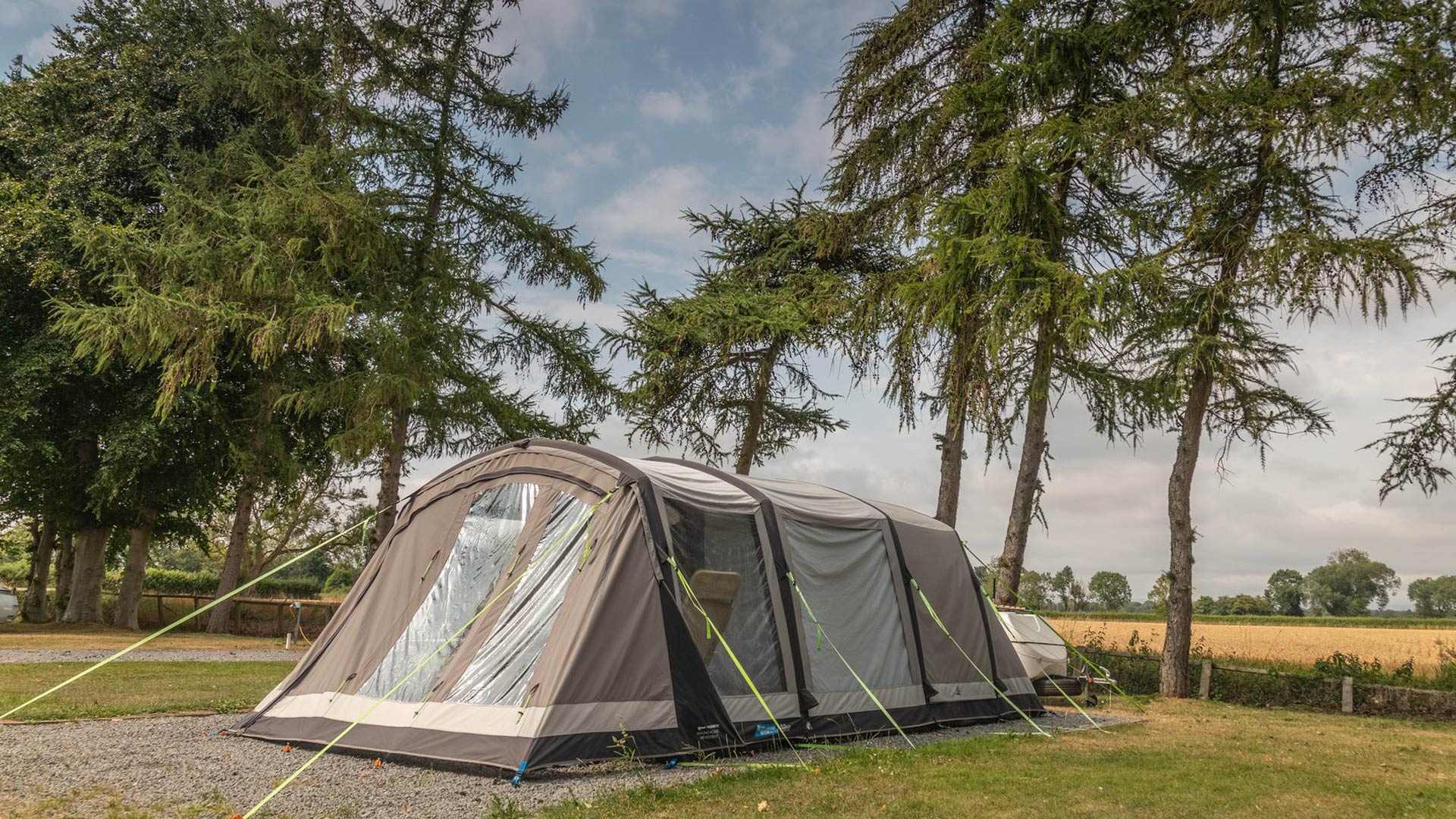
There are a few things to consider before purchasing a tent which can make all the difference to the success of your camping trip:
1. How many people will be using the tent?
If you’re spending time in your tent during the day, look for a spacious living area as well as sleeping space. Larger tents will take up more space in the car and in storage, and it may also cost more to pitch a very large tent at a campsite. For example, tents measuring more than 5m x 9m will need to pay for a Jumbo Pitch on one of our Club Sites.
The size of a tent is usually described by the maximum number of people it can sleep, also known as the number of berths. This refers to the size of the sleeping area, normally a separate inner tent, and the size allocated to each person can vary greatly. If you’re carrying your tent in a backpack, then a one-person tent might be perfect, but for bigger groups, consider a large sleeping area or more berths than campers.
The downside of a one-person tent is that it leaves little room for storing camping gear. A two-berth tent could be a better choice because it’s only slightly heavier but provides extra space for your equipment and outside coverage for your backpack and muddy boots.
Finally, consider the height of the tent and your ability to stand up. If you’re only using it for sleeping, then a low height may suffice. However, if you’re spending a lot of time in your tent or you’re camping with others, you may want more room to stand up, stretch and walk around.
2. What is the budget?
While it might be tempting to go for the cheapest option, consider whether a budget tent will offer the comfort, durability and features you need. A tent that falls short can affect your overall experience, so finding the right balance between cost and quality is key to enjoying your trip.
Buying a tent is often just the beginning of your camping investment. You will need essentials, such as cooking gear, something comfortable to sleep on and a form of lighting for the evenings, but you can keep costs down by bringing pillows and duvets from home. It’s helpful to set a clear budget and create a list of must-buys before you start shopping. To help you create your shopping list, check out our camping checklist and pick out anything you need to purchase.
3. How often are you using your tent?
For festivals, borrowing a tent is often the easiest option. However, if you plan to go camping regularly, investing in a high-quality tent built for durability and varied weather conditions will ensure comfort and longevity.
4. What tent features to look out for
Tents have different features, so knowing your priorities will help you choose a tent most suitable for your adventure.
Look out for:
-
Weight: If you’re backpacking, cycling or travelling by canoe, a lightweight tent is essential. The physical size of a tent, the type of poles used, and the fabric will all effect the tents overall weight. A lightweight tent is often made using composite fabrics that are light as well as strong. If weight is your priority, aim for a tent which is less than 2.5 kg per person. A good quality two person backpacking tent could weigh 1.6 kg or less.
If you’re happy to opt for a heavier tent, you’ll notice that they have more space and features but are less practical to carry over long distances. Family poled tents start from around 10kg, while a polycotton inflatable could be more than 60kg (these will likely have a wheeled bag to help you move it).
- Waterproofing: Almost all tents sold in the UK are made with waterproof fabric and you will often see the term Hydrostatic Head (HH), which we explain in more detail later. Despite being made with a waterproof fabric, poorly sealed seams leak, and rain can still seep inside if there are gaps under the doors or around the groundsheet. Paying attention to these small details will help you choose a tent suitable for wet weather.
- Blackout features: For spring and summer camping, blackout features can be useful, as they help block out early morning sunlight. Some blackout inner tents also help reduce heat buildup during the day.
- Internal storage: Built-in pockets and gear lofts help keep essentials tidy.
- Porch: Many tents come with an area where you can store muddy gear, relax in the shade or rain, or remove your boots without bringing dirt inside. If your tent has a sloping front, a small porch over a side door can make all the difference between keeping the inside dry or letting the water drain off the tent into your living area.
- Separate rooms or dividers: If you’re camping with children or in a group, tents with separate sleeping areas or room dividers can offer privacy.
- Ventilation: Look for mesh panels and vents to help improve airflow and keep condensation at bay.
- Ease of setup: If you’re new to camping, you want an easy way to pitch your tent. Some tents use colour-coded poles or quick-pitch frames for faster and easier setup. Keep in mind that larger tents can be more challenging to assemble, though having extra hands can make it much easier. Inflatable-tube tents tend to be easier to set up than poled types.
- Extra doors or windows: Having more than one door is especially useful when sharing a smaller backpacking-style tent, as it allows each person to enter or exit without disturbing others. In larger tents, you can choose which door to use during rainy periods to keep as much water out as possible. PVC or mesh windows can provide ventilation and natural light, making the tent feel more spacious and comfortable during the day. Keep in mind that extra windows can add weight and cost, so consider how many you really need and whether they can be covered for privacy or to protect against rain.
- Anchor points: Securing your tent properly is essential for staying safe and stable in windy or rainy weather. Ensure your tent has enough anchor points to hold it firmly in place, keeping it secure even when the wind picks up.
- Bug and mosquito mesh: If you enjoy a breeze but want to keep insects out, look for tents with built-in mesh panels. These allow airflow while preventing unwanted insects from getting inside, making your tent more comfortable, especially in warm or humid conditions.
- Groundsheet: Many tents come with sewn-in groundsheets (SIGs), though the seam between the flysheet and groundsheet is often welded (to improve water resistance) or zipped. These are great for keeping draughts and insects out of your tent but be sure to check the ventilation so it doesn't get uncomfortably stuffy, especially at night.
Waterproof rating and Hydrostatic Head (HH)
Many elements need to come together to keep you dry inside a tent.
One key measure is the Hydrostatic Head (HH) rating of the flysheet fabric, which indicates how much water the fabric can withstand before it starts to leak. This is measured by holding a tube on the fabric and seeing how high the water can go before it seeps through. Although this is how it’s measured, rain is not the same as a static column of water. So, the HH can be a good indicator of the quality of a fabric (2,000mm being typical of a cheap polyester tent while 20,000mm is suitable for serious expeditions), but it’s not the whole story.
Most tents sold in the UK will not let water through the flysheet fabric itself, but leaks can occur elsewhere. Common weak points include unsealed seams or exposed zips. Check the doors and windows of any tent you are considering buying. If rain is driven against them, could it get in under the door or through a poorly positioned ventilation panel?
What are the different types of tents?
Once you’ve decided the use for your tent, the number of people using it, your budget and which features you want to prioritise, you can start looking at the different tent types.
Dome tents
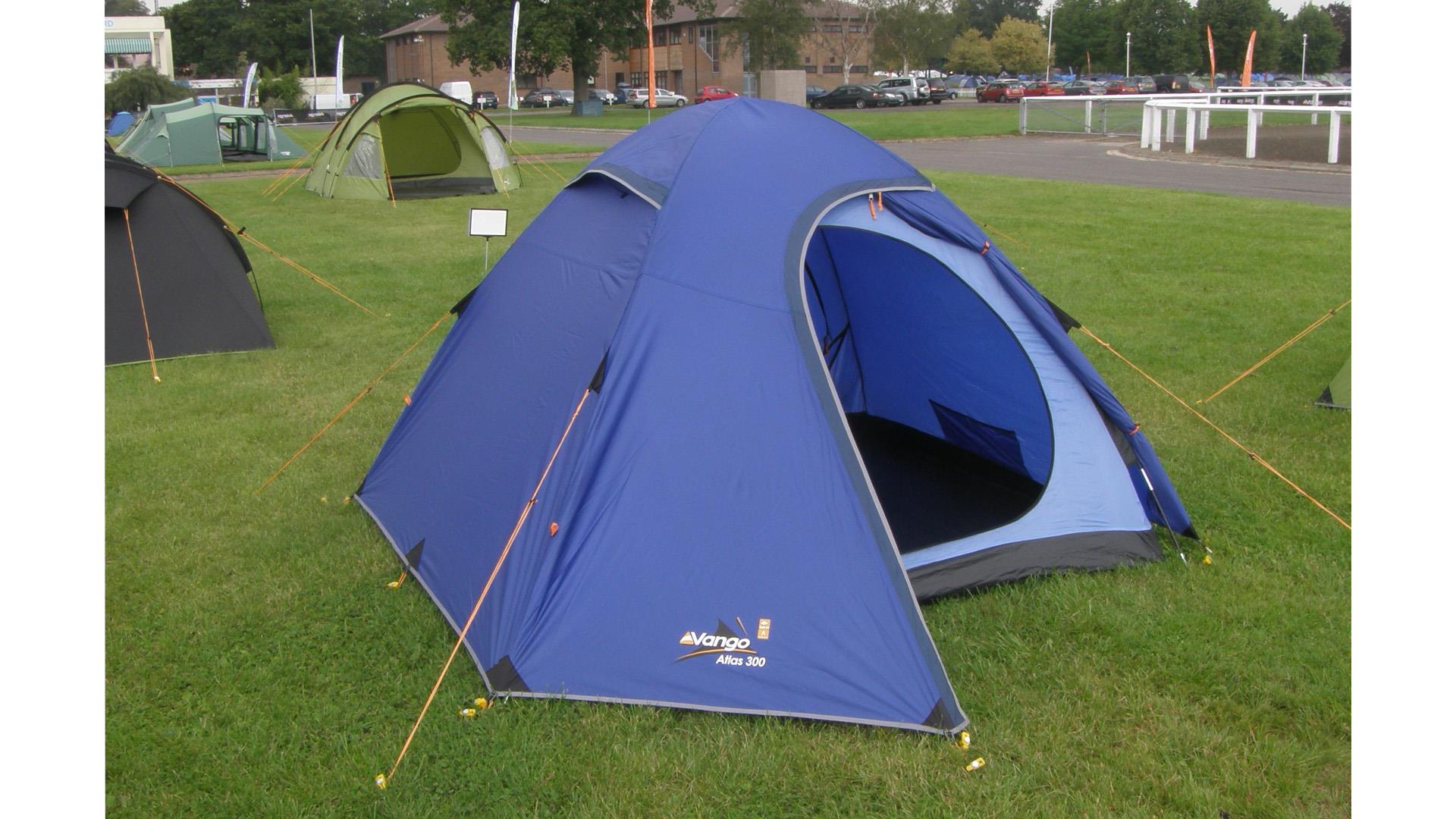
A dome tent has two or more flexible poles arranged in sleeves to form semi-circles, meeting at the central top point of the tent, hence making a dome shape. The larger the dome, the less stable it is in the wind, so most dome tents are of a smaller size. A dome tent can be self-supporting, allowing easy movement around the pitch, though it will need to be pegged down if there’s any wind.
Geodesic tents
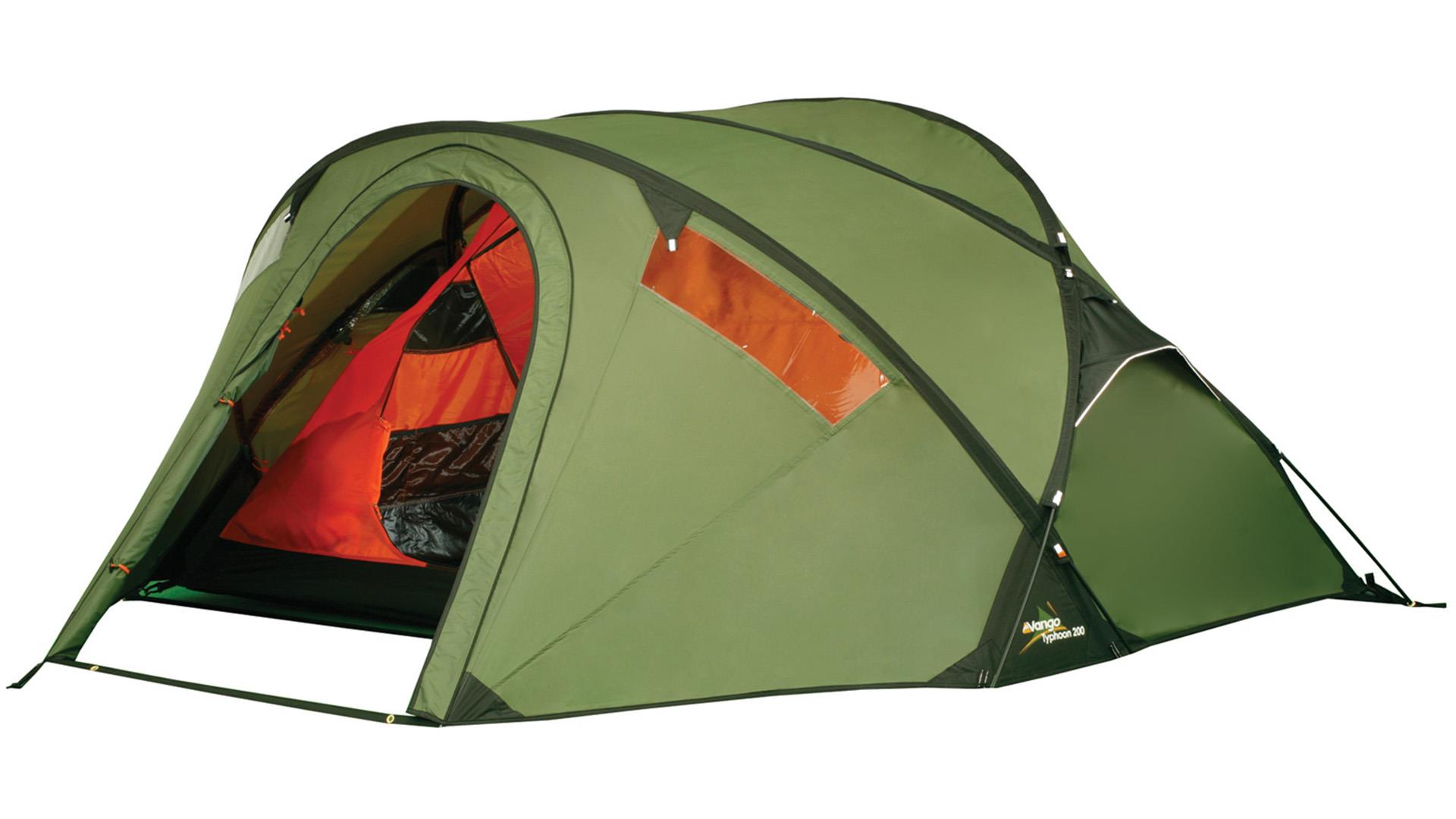
A geodesic tent features poles that criss-cross over its surface, often intersecting to form triangles. The term geodesic refers to the shortest possible line between two points on a curved surface. This pattern helps distribute stress evenly across the tent’s structure, making it the most stable type of tent.
Semi-geodesic tents follow a similar design but use fewer poles, offering a balance between stability and weight. Both geodesic and semi-geodesic tents are typically compact and lightweight, making them ideal for use in mountainous or exposed, windy environments where reliable performance is essential.
As with dome tents, geodesic and semi-geodesic tents are normally self-supporting, so you can reposition them before pegging out.
Tunnel tents
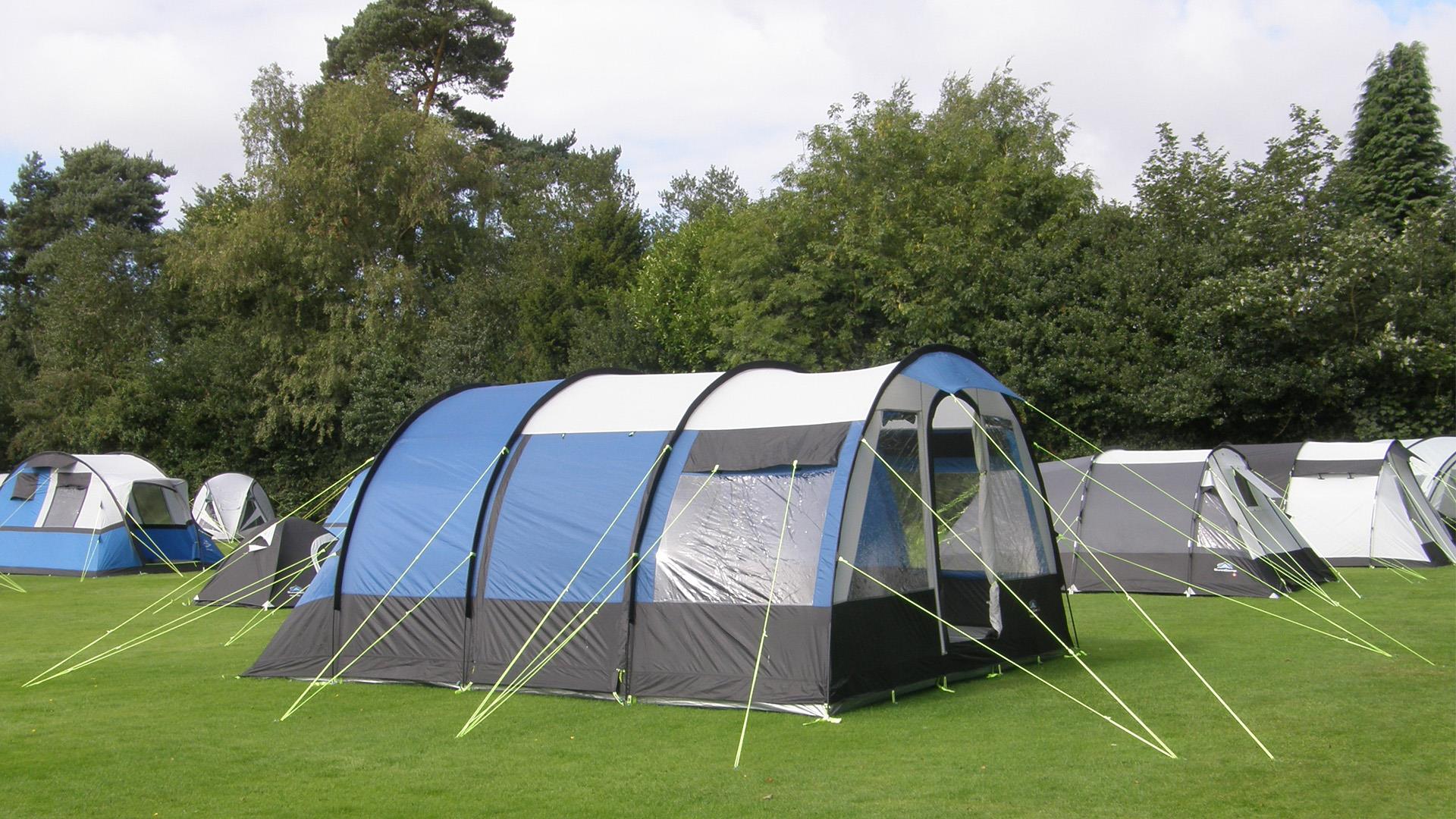
Tunnel tents use two or more hoops arranged one behind the other, with the flysheet positioned between them to form the tunnel. These are some of the most straightforward units to pitch and are generally stable once pegged out, but it’s important to securely peg down before the wind catches them.
Vis-à-vis tents
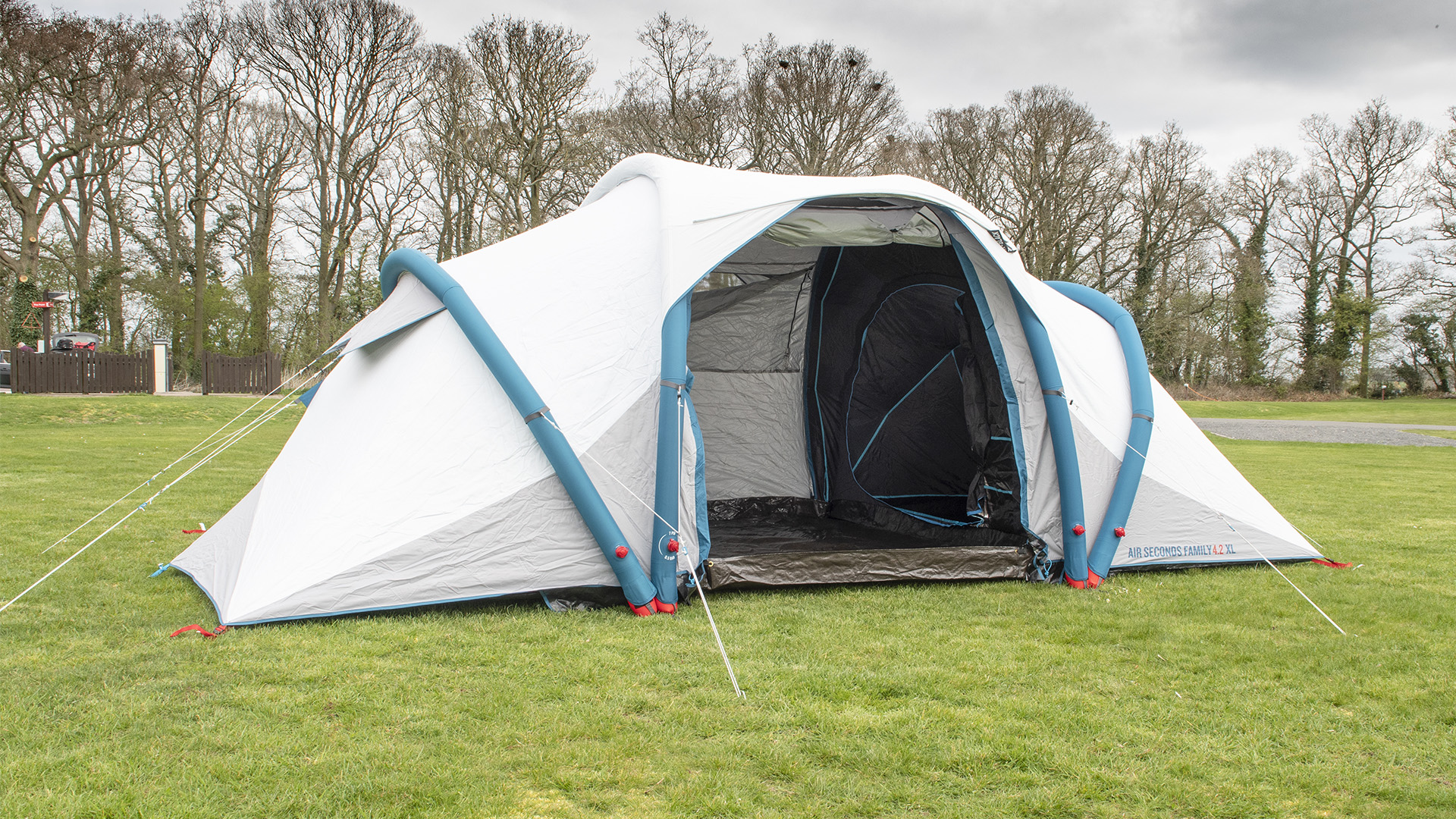
Vis-à-vis means ‘face to face’ in French. In these tents, sleeping compartments are at opposite ends, with a central living area in between. This layout is often great for families with children who prefer to keep some space between adults and children. However, the living area can be darker than in other tent designs because there are sleeping areas where there might otherwise be windows.
Pod tents
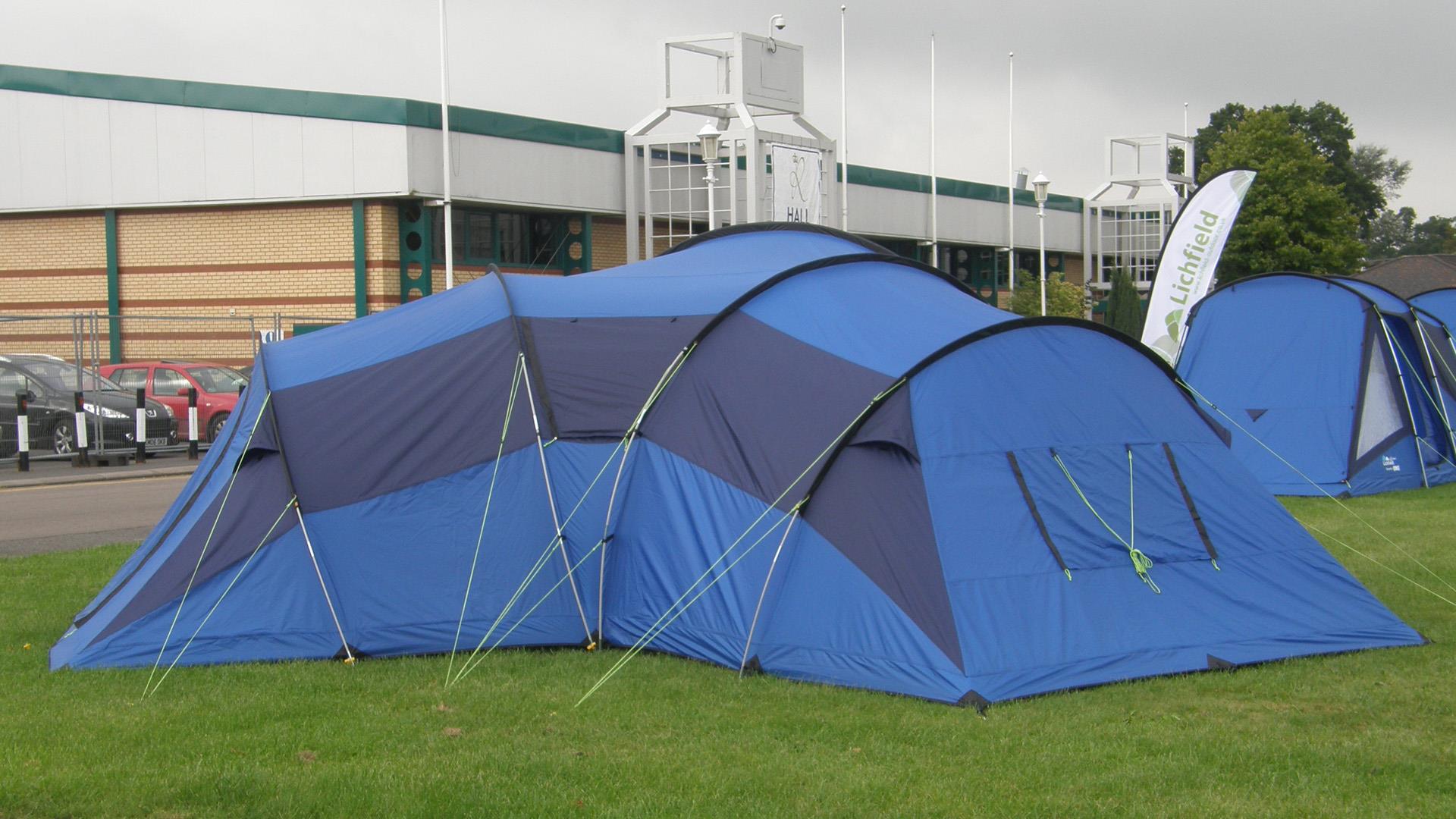
Some of the largest tents around are in a pod formation, featuring a central living area with sleeping compartments radiating out like the points on a star. At first glance, these look great for families where each member wants their own space, with a communal area to gather during the day. However, a pod-style tent tends to use a lot of fabric, which can make it challenging to pitch. The circular footprint also means it may not fit on a Club Sites standard 5m x 9m campsite pitch, so you could be turned away or need to pay extra for a larger plot.
Frame tents
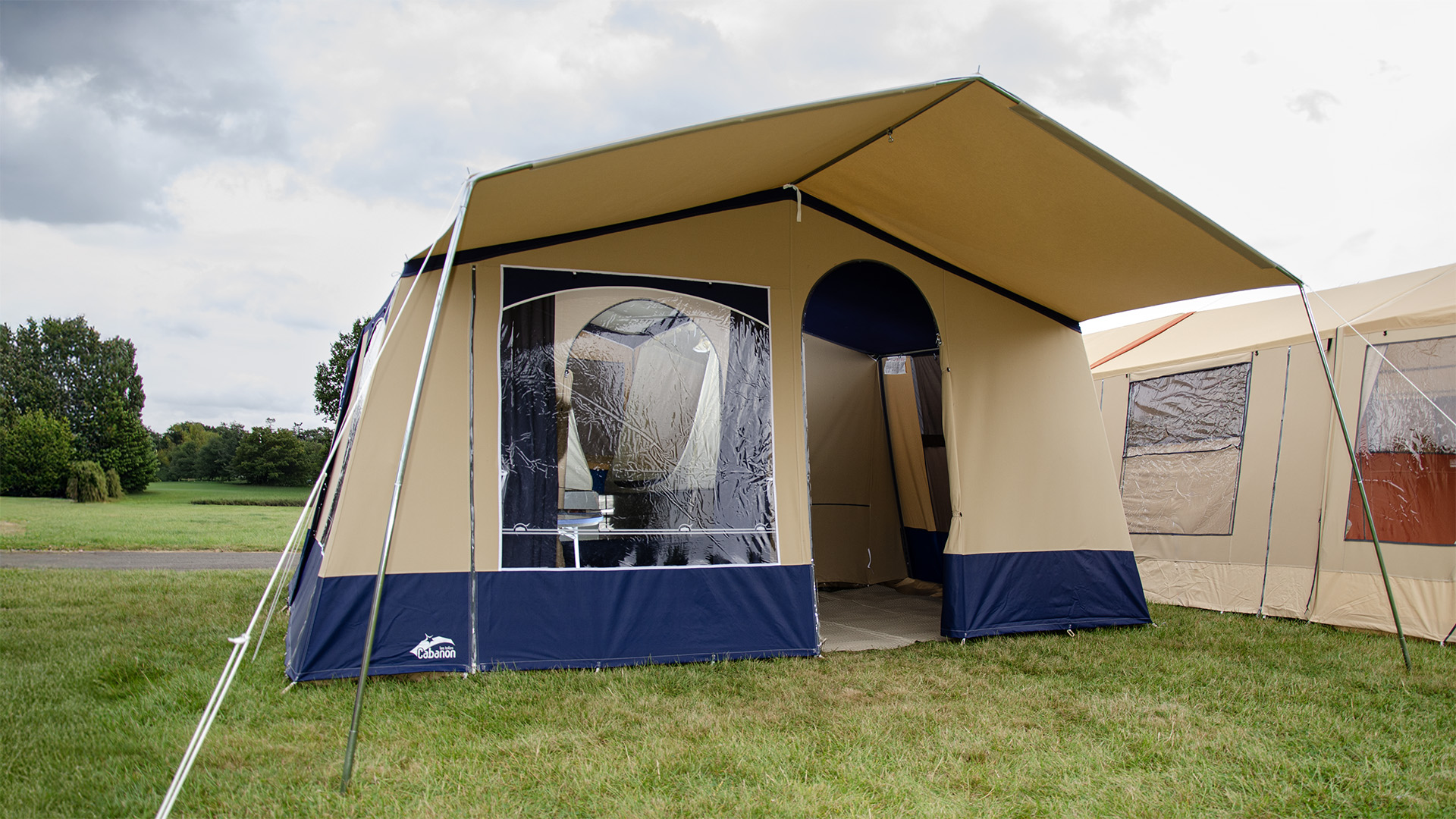
Popular in the 1960s and 1970s, frame tents are now less common. Typically, they’re made from cotton or polycotton canvas with a rigid internal pole framework, though there are now some models with shaped inflatable tubes. Modern versions tend to be large and heavy but offer excellent space and generous headroom. Due to the size, you may require a larger pitch if you’re camping with the Club.
Trailer tents or folding campers
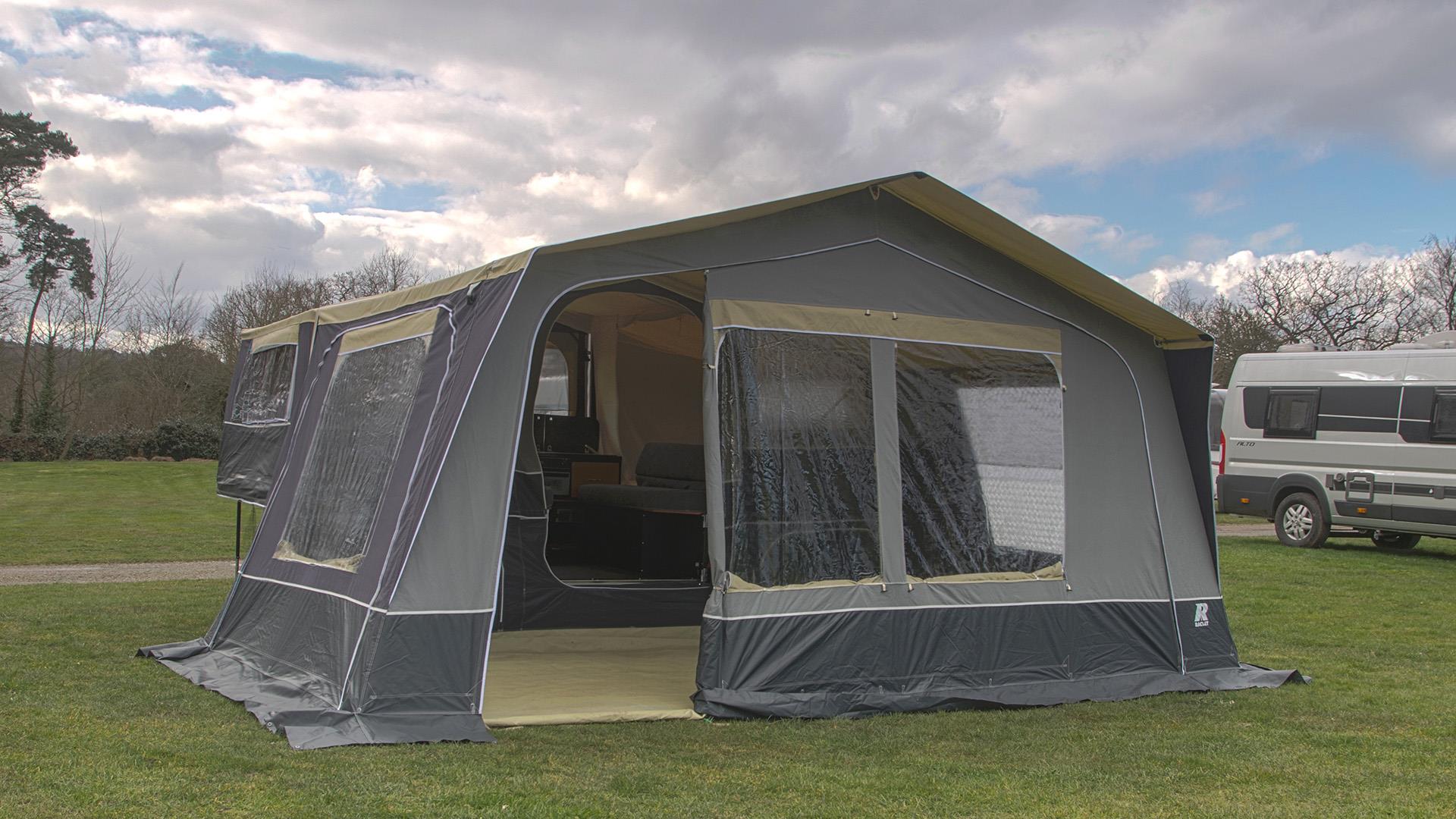
At the top end of the tent market, in terms of price and often space, are trailer tents and folding campers. For more information on these tents, check out our guide to buying a trailer tent or folding camper.
Quick-pitch tent styles
If you’re looking for a tent that is quick to set up, there are a few different options to pick from. Some have pre-installed frames and others have minimal poles but rely on pegs and guy lines for tension and stability.
Knuckle-jointed pole tents
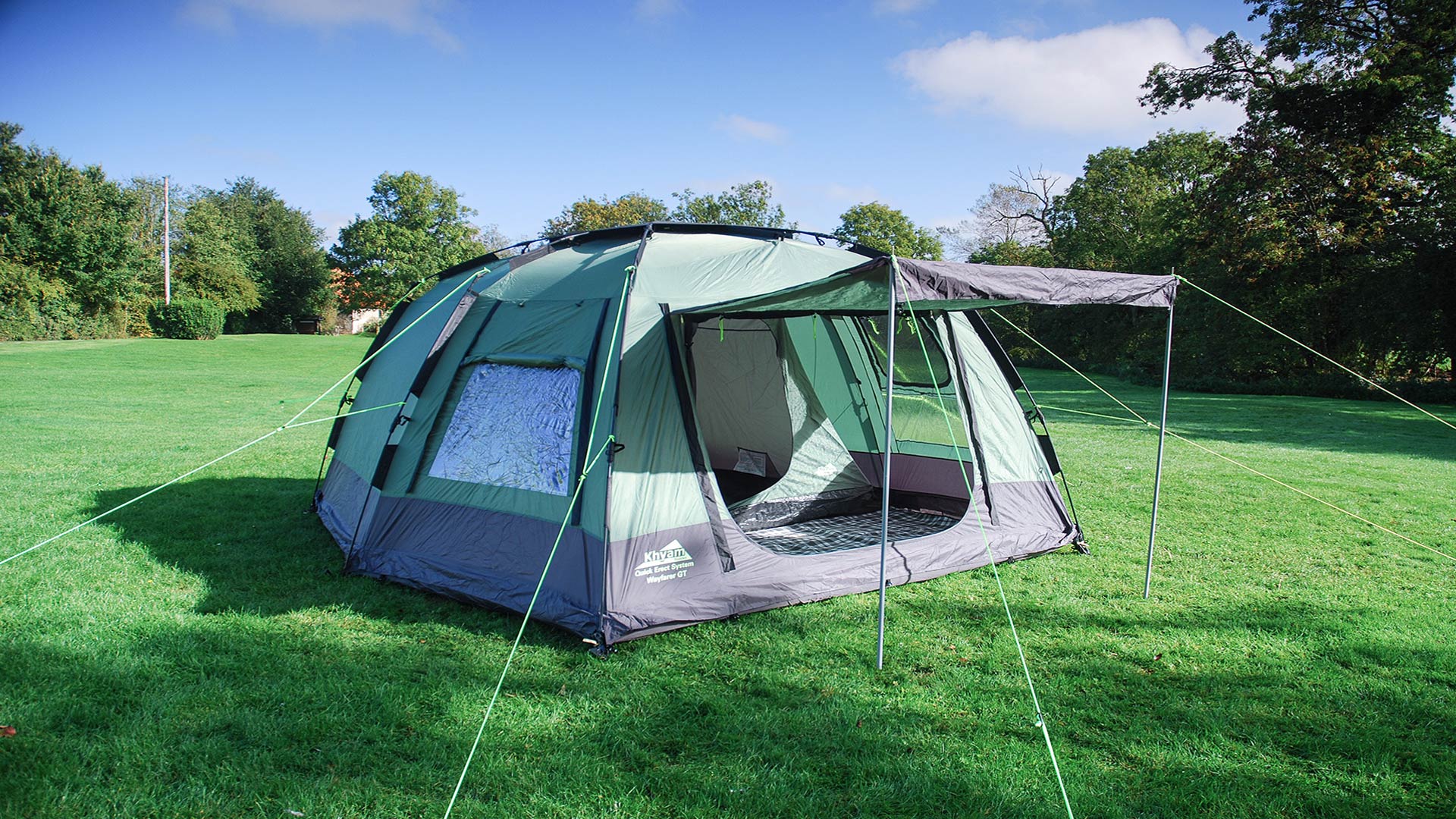
The best-known knuckle-jointed pole tents are made by Khyam, using its Quick Erect system. In these tents, rigid poles are pre-threaded through the sleeves but fold down along with the tent fabric, like an umbrella, making them heavier and bulkier than other types of tents. The tents come in dome and vis-à-vis styles and are quick to pitch, though you need to take care not to pinch either the fabric or your fingers in the pole joints.
Inflatable (Air) tube tents
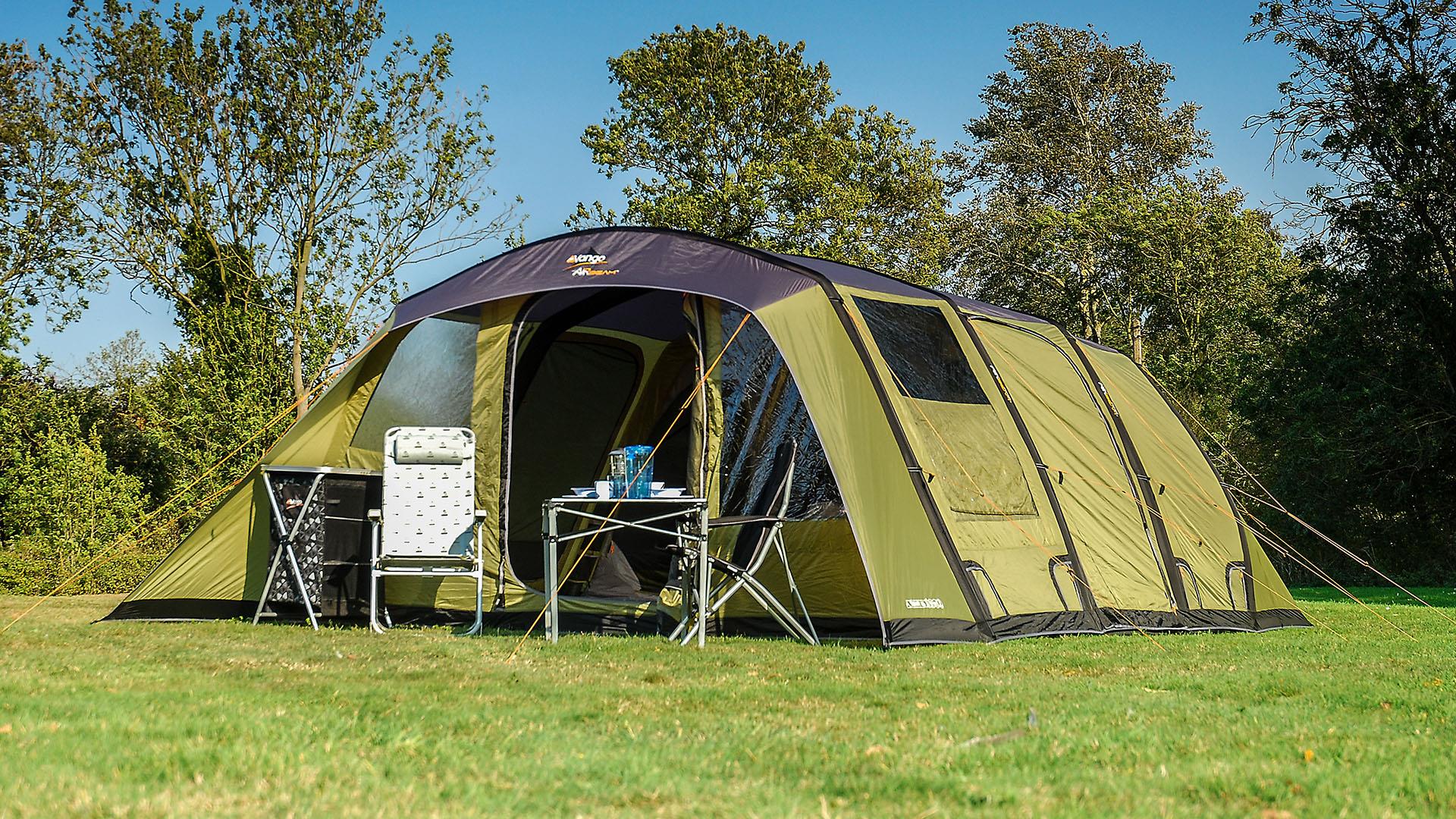
Around half of the tents sold today have inflatable tubes in place of traditional poles. Typically, these tents have a structure of low-pressure tubes that are inflated after pegging out the groundsheet. With no major poles, they can be a safer option for children to be around during setup and are swift to pitch, but are often heavy and bulkier due to the air tubes. They are more expensive than their pole-and-sleeve counterparts.
Pop up tents
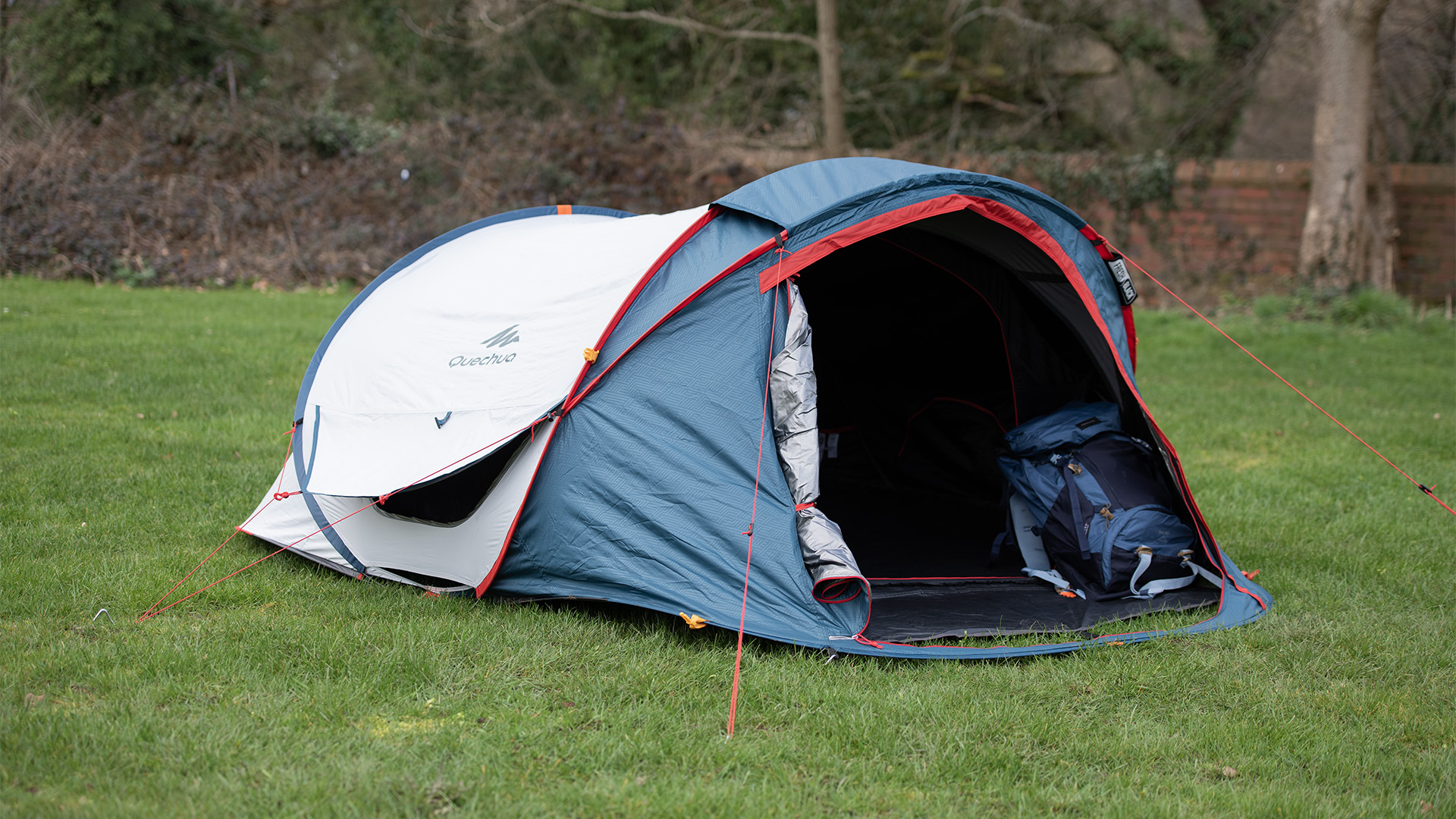
Many manufacturers now produce pop-up tents that have the poles threaded into the fabric. They are stored with the poles curled up, so when you take the tent out of the bag, it ‘pops up’ into shape and is ready to be pegged into the ground.
Previously, most pop-up tents were single-skinned and only suitable for dry conditions. However, some now come with inner tents and can accommodate up to five people. Before you purchase a pop-up tent, check the ventilation and make sure you’re confident with folding it back into its bag, as this can be tricky.
Single pole tents
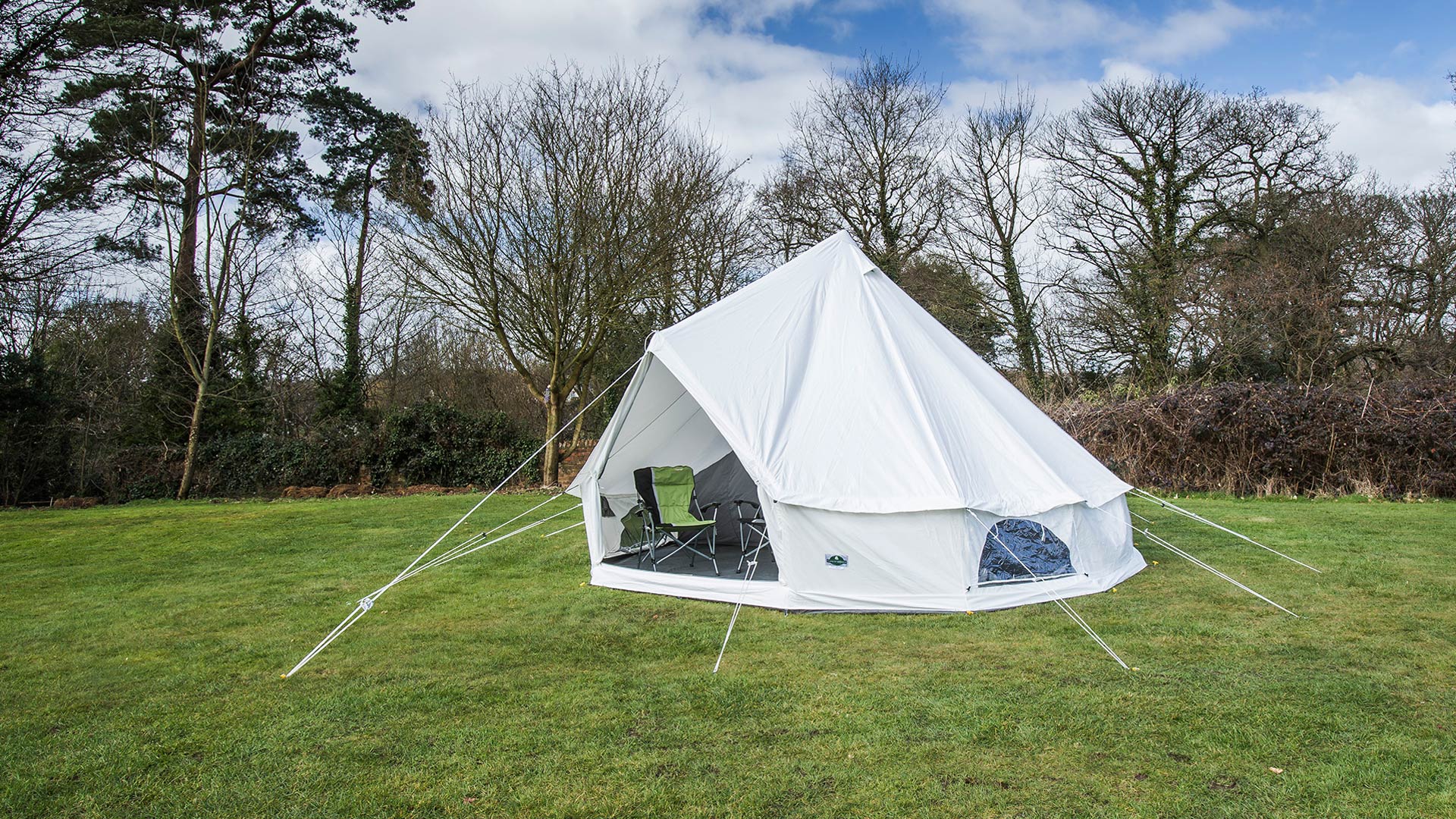
Single-pole tents, also known as tepees or bell tents, have become popular in recent years. These tents have a pole in the centre and are pegged out to form a circle at the base. Although these tents look great and can be spacious, they’re also low in quality. Single pole tents tend to be single-skinned and use man-made fabric, meaning they’re only suitable for camping in fair weather.
Ridge tents
This is the classic tent shape that a child might draw. It has a pole at each end and sometimes a cross pole – the ridge – holding up a tent-shaped roof.
Ridge tents are remarkably stable and range from tiny one-person tents right up to large marquees. They are easy to pitch and still make excellent shelters today.
Their main disadvantage is in head height – even in the largest units, there’s limited height in most tents. This doesn’t matter when you’re using the tent purely for sleeping, but it makes it less than ideal for a family holiday in the rain if you can’t walk around inside.
Roof top tents
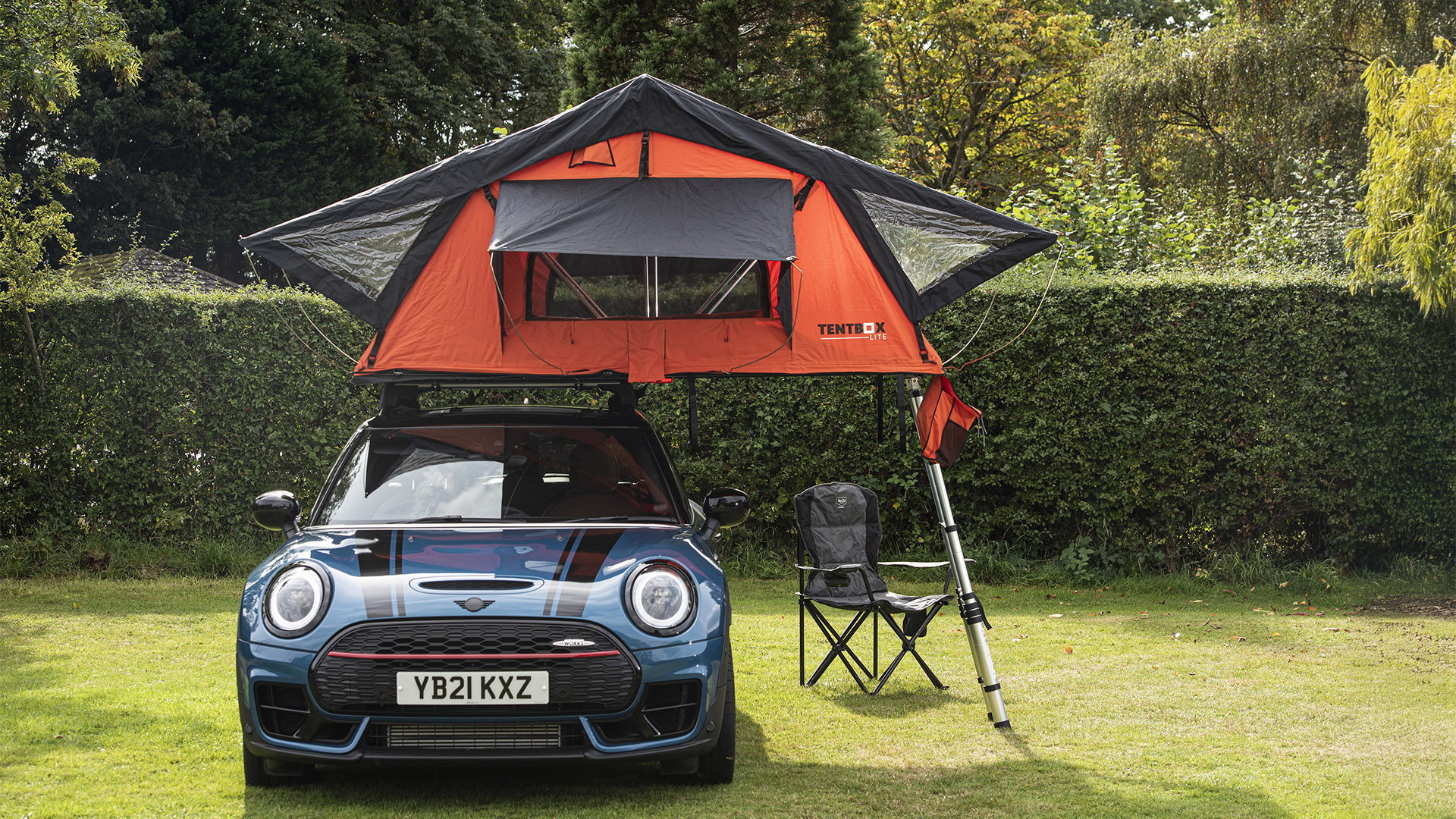
Tents mounted on the roofs of vehicles aren’t a new concept, but in recent years, their availability and popularity have grown. These tents attach to roof bars on top of a car or van and are accessed via a ladder. While setup is often minimal, you will need assistance to get the tent onto the roof initially.
It’s important that anyone using a roof tent is comfortable with ladders. Some tents have simple covers while traveling, whereas others come with hard shells that need to be stowed if you plan to drive during the day. If you don’t frequently use your car or are looking for a tent primarily for overnight trips, a roof tent could be a great option for you. For more information, check out our guide on rooftop tents.
Types of tent materials

There are several different materials used to make a tent, from the fabric on the outside of the tent, also known as the flysheet, to the pegs used to hold it down.
Understanding tent fabric
Most tents consist of two layers: an outer layer known as the flysheet, and an inner tent used for sleeping. You typically won’t have a choice of fabric for the inner tent, but it should be breathable to help reduce condensation.
The flysheet can be made from a variety of materials, each with its own pros and cons:
- Polyester: A synthetic material commonly used in tents. It’s available in different weights and finishes, and, unlike nylon, it is known for not shrinking or stretching. Polyester is not waterproof on its own, so it is coated with a durable water repellent (DWR) to keep the rain out. Manufacturers often add other coatings to improve UV resistance and fading. Higher-grade polyester tents may also have a rip-stop weave, with some threads being thicker in a cross-hatch pattern. This strengthens the fabric and can stop tears spreading, but it is more expensive. Watch out for fabric that has a rip-stop pattern printed on as it may look smart, but it won’t have the same anti-tearing properties.
- Nylon: Often used in lightweight or backpacking tents due to its low weight. It usually requires a coating, such as polyurethane (PU), acrylic or silicone, to improve durability, waterproofing and UV resistance. A drawback of nylon is that it can tear, and form runs if punctured. To mitigate this, you can buy it in rip-stop form, as mentioned above.
- Composites: High-performance expedition tents may use laminated polymer or composite textiles, which combine strength and waterproofing with very low weight. These materials are more expensive and are used in extreme conditions.
- Cotton (canvas): A natural and breathable fabric that stays cool in summer and retains warmth in winter, cotton tents rarely suffer from condensation and are very durable. As they are naturally breathable, inner tents are unnecessary unless you want them for privacy. However, cotton tents are heavy and take a long time to dry if they get wet. A new cotton tent may leak initially, so it is recommended to wet it and allow it to dry naturally before use. This process, known as weathering, allows the natural fibres to expand and seal any small gaps.
- Polycotton: A blend of polyester and cotton with similar benefits to pure cotton but generally weighs less and is cheaper. Polycotton tents often have weather-resistant coatings, making them breathable, durable and more affordable than 100% cotton.
- PVC: This sturdy plastic is often used for groundsheets as it is hardwearing and fully waterproof.
What are the different types of tent poles?

Tent poles are made from various materials, each offering different benefits in terms of weight, strength, flexibility and cost. Here are some of the most common types:
- Glass Reinforced Plastic (GRP): Commonly known as fibreglass, GRP poles are affordable, lightweight and flexible. They’re widely used in dome and tunnel tents, or as extra poles to shape porches and the like in larger tents. GRP is made from thin glass strands held in a resin. Some such poles have an outer wrapping and appear under a brand name, such as Durawrap or Dynaflex. One disadvantage of GRP is that when a pole breaks or fractures, the break can have sharp glass splinters. These breaks can happen if the pole is accidently mis threaded in a sleeve. Despite this, GRD poles can be repaired or replaced easily.
- Steel: Steel poles are strong and durable, making them ideal for larger family tents. They are usually painted, plated or powder-coated to prevent them from rusting, but are also heavy and more challenging to transport and pitch.
- Aluminium alloy and titanium: Lightweight and more flexible than steel, though often more expensive than GRP, aluminium alloy and titanium poles are a popular choice for backpackers and lightweight campers.
- Carbon fibre and other composites: Poles made from carbon fibre and other composite materials are extremely light, strong and flexible. They are typically found in high-end or specialist expedition tents where low weight and high strength are more important than low cost.
What are the types of tent pegs?

When you buy a tent, it typically comes with standard straight steel pegs that have a circular cross-section, also known as pins. These can be sufficient in soft ground with no wind. However, if the wind is strong or the ground is sandy, pins can easily become dislodged, and they will bend if the peg hits a stone while being driven into the ground. For this reason, it’s worth carrying some additional tent pegs designed for different ground conditions.
Here are some common types of tent pegs available on the market:
- Pressed steel or alloy pegs: Pegs with a flat cross-section offer better grip than standard round steel pegs, especially in sandy soil, and are generally more durable.
- Lightweight pegs: Aluminium alloy or titanium lightweight pegs are great for backpacking but must be used with care, as they can bend easily. They can be short so they may not hold in strong winds.
- Moulded plastic pegs: There are many shapes and sizes of moulded plastic pegs on the market; many are remarkably strong, even though they are light in weight and won’t rust. They are good for soft or sandy ground.
- Rock pegs: These tent pegs are specifically designed for hard or stony ground as well as all-weather pitches. They are normally made from steel and generally have a head to take the guyline, which is often made of plastic.
- Screw-in pegs: These have a strong grip and are designed to stay in the ground unless you unscrew them. Many people use a cordless drill to put them in place and extract them.
- Groundsheet pegs: Typically featuring flattened tops, these pegs enable you to stand on them safely without risk of injury.
- Glow-in-the-dark pegs: These pegs help prevent tripping over guy lines in low-light conditions, making them great for night-time visibility.
Top tip: Never push a peg in with your foot, as it is easy to injure yourself and damage the peg. Ideally, use a suitable mallet. When removing a peg, use a peg extractor. This can make the process easier and prevent damaging the pegs.
Where to see and buy a tent?
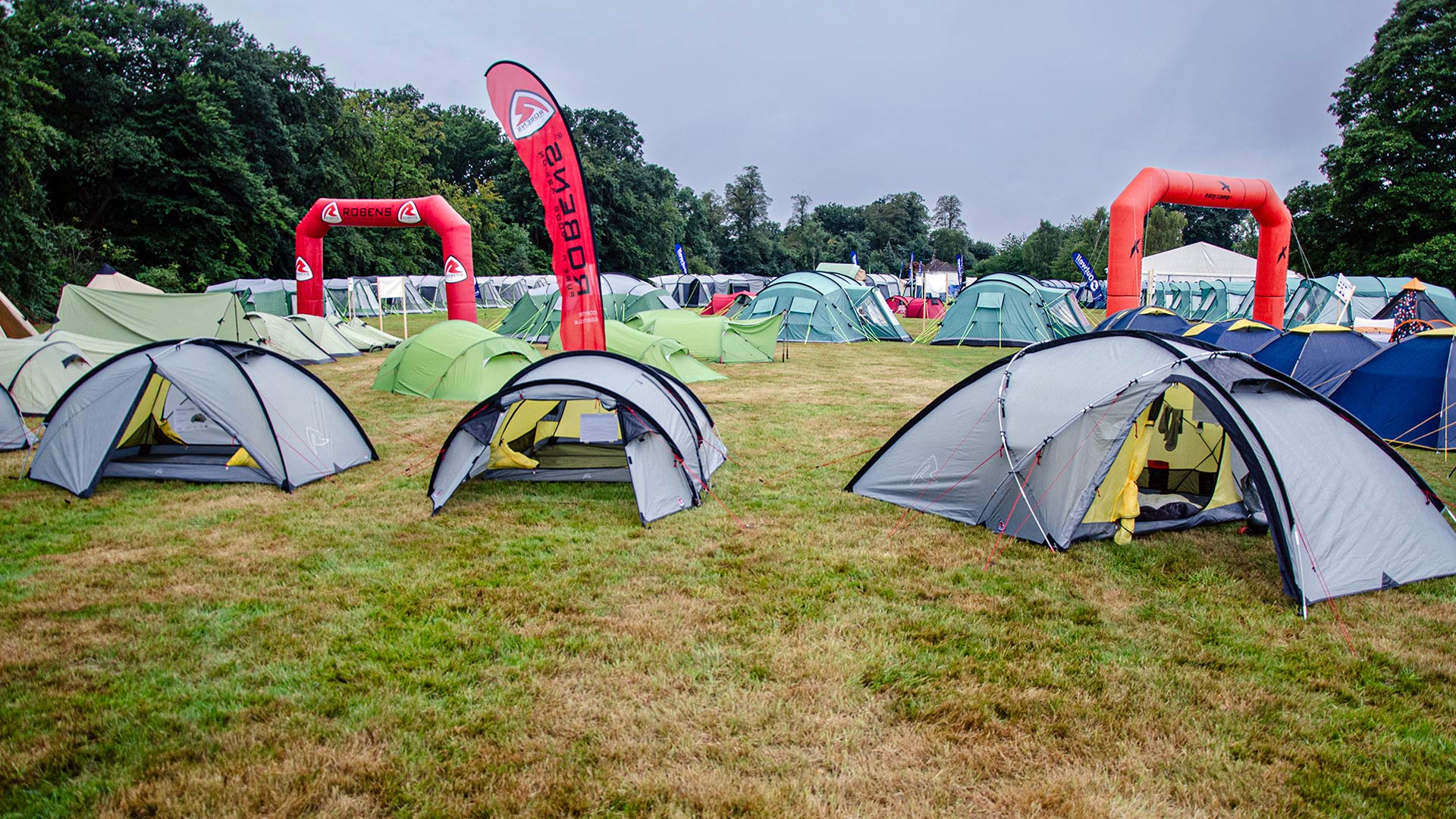
Now that you have some idea of the different tents available, it’s worth researching what suits your circumstances. For extra support, we have reviews available in the Club magazine for our members, and our team’s knowledge and hands-on experience can help you make the right decision.
Here are some other options:
Specialist retailer
One of the best ways to compare tents is by seeing them pitched in person. Specialist camping retailers, such as Go Outdoors, often have display tents up so you can explore the tent layout, space and its features. When visiting a specialist retailer, keep in mind that they can only display a limited number of tents due to the space in the store. Additionally, some retailers may want to promote their own brands, so they will typically showcase a select range of tents.
Psst, are you a member of The Camping and Caravanning Club? Members get exclusive discounts at a variety of specialist retailers where you can purchase your tent. To get a spectacular deal, check out our offers and discounts here. Not a member? Join today and start saving on camping equipment, campsites, attractions and much more.
Online retailers
Buying online is convenient, but it can be harder to visualise the tent’s actual size and shape until it’s pitched. Always double-check the specifications and read reviews carefully.
Second hand purchases
Buying a pre-owned tent is cost-effective and eco-friendly. You can find used camping gear in our Club magazine and on many online marketplaces or at local second-hand markets, such as:
- eBay
- Gumtree
- Vinted
- Facebook Marketplace
- Car boot sale
Always try to buy locally so you can inspect the tent while it’s pitched. If it’s not possible, make sure the platform offers buyer protection.
Camping shows or exhibitions
Outdoor exhibitions are excellent for viewing a wide variety of tents in one place, these take place during the main camping season from April and are often tied to a retailer. Indoor exhibitions, such as those held at the National Exhibition Centre, particularly at the start of the year, feature extensive displays of tents and camping equipment from various brands. You’ll get to see the latest tent models, colours and even limited-edition products. Caravan shows can also showcase trailer tents and folding campers.
Sometimes dealers host end-of-season outdoor shows where you can find bargains, though always check the condition of sample tents before purchasing.
Check out the latest camping, caravan and motorhome shows and exhibitions here.
Shops and supermarkets
Supermarkets and discount stores often stock budget camping kits at the start of the season. If you're on a tight budget and one of these tents has the features you need, it can seem like good value for money. However, do not expect a low-cost tent to perform as well in heavy rain or strong winds as a better-built model. Sadly, some campers have abandoned the idea of camping altogether after a poor first experience with a tent that was unable to cope with the weather.
A better option could be to buy a second-hand tent, where you are likely to get a higher quality tent for a similar price.
Top tip: Always practise pitching your tent at home, a local park or at a nearby campsite before your trip. This way, you can check that all the parts are included and in good condition. It is much easier to replace or repair anything that is missing or damaged before you set off on your trip, and it’ll make your first proper camping trip far less stressful.
How to pitch a tent?
Last Modified: 24 Sep 2025
Why do tents have two layers of fabric?
Last Modified: 24 Sep 2025
How long does a tent last?
Last Modified: 24 Sep 2025
Which is better, poles or air tubes?
Both have pros and cons.
Traditional poled tents can be split up into at least two sections, making them easier to carry in a separate bag.
Inflatable tube tents are generally quicker to pitch and remove the risk of snapped poles. Families with young children may find them less stressful, and the kids can help with inflating. Price, weight and packed size are considerations.
In either case, much of the time taken to pitch a tent is in the pegging out, which will be the same whichever type of tent frame you choose.
Last Modified: 24 Sep 2025
What if something in the tent breaks?
One advantage of buying a slightly pricier tent from a well-known supplier is that you are likely to be able to buy a replacement part if you accidentally break or tear something.
Replacement poles, pole sections and end caps (known as ferrules) are normally available from your local camping equipment retailer or a specialist spares stockist, such as Tent Spares.
If replacements are no longer available for your tent model, you can buy a standard piece of pole with the correct diameter and cut it to length.
Last Modified: 24 Sep 2025
Glossary: Tent terms explained
Berths: Refers to the official number of people a tent is designed to sleep. Check the size of the sleeping compartment to make sure your camp beds will fit. It’s best to consider a slightly higher number of berths than you need for comfortable camping.
Guylines: These are tensioned cords attached to the outside of the tent and used to secure it to the ground. Guylines help stabilise the tent, especially in windy conditions. In some tent designs, such as bell tents, they are used to shape the tent. They should always be properly pegged out and adjusted to suit the weather conditions.
Hydrostatic Head (HH) rating: A measurement of how waterproof a tent’s fabric is, expressed in millimetres (mm). The higher the number, the more water pressure the fabric can withstand before it begins to leak. Regular reproofing will help maintain the waterproof coatings and resistance to UV light. See our guide on looking after your tent for more information.
Pitching a tent: The process of setting up or erecting your tent. This typically involves laying out the groundsheet, inserting and securing poles or inflating air beams and pegging out the guylines.
